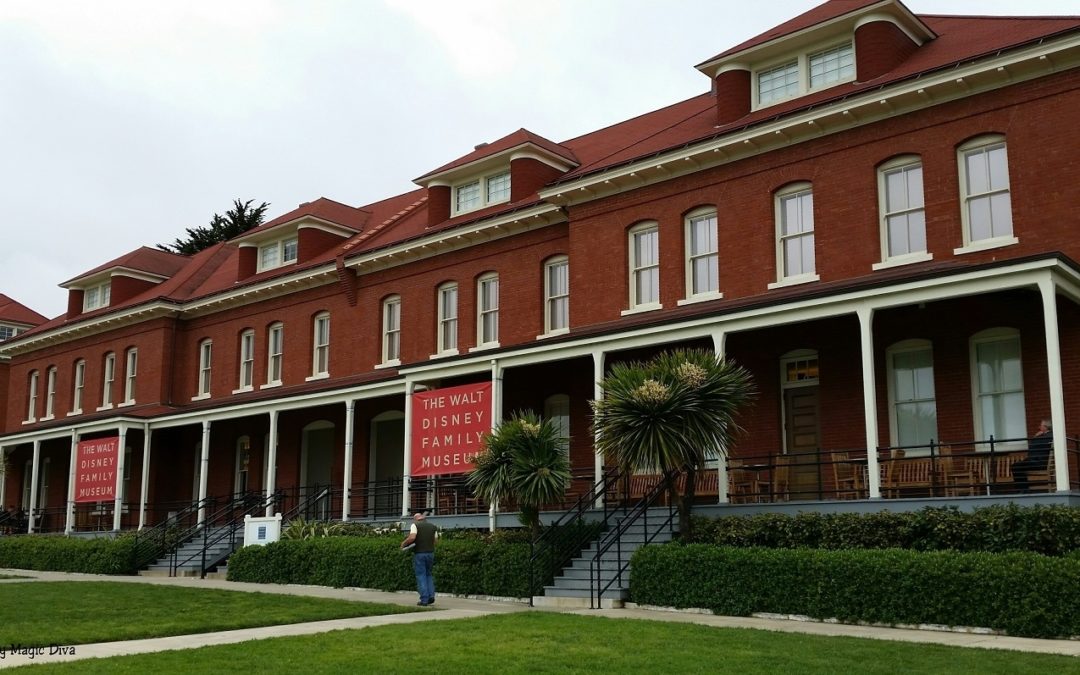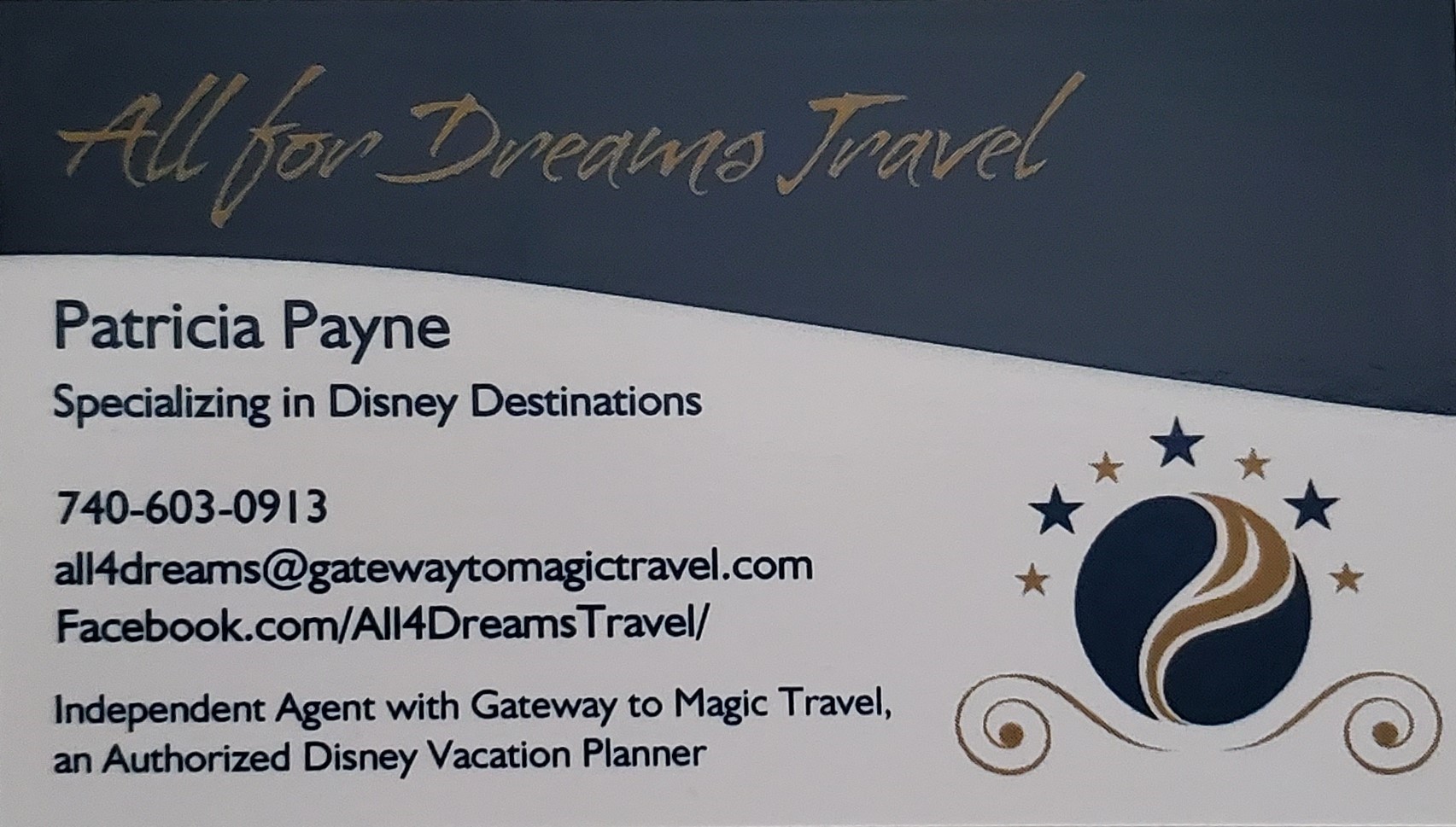by Disney Magic Diva
I recently had the opportunity to travel to the San Francisco Bay area, and took advantage of an early arrival to visit the Walt Disney Family Museum. Located in what at one time had been an Army barracks in the Presidio of San Francisco, this museum represents a daughter’s tribute to her father and his family. Diane Disney Miller, Walt’s oldest daughter, and her husband, Ron Miller, the Disney Company’s CEO from 1978 to 1984, wanted to honor and celebrate the contributions Walt made to entertainment and American society in the twentieth century. On October 1, 2009, the Walt Disney Family Museum opened its doors to the public.
Why San Francisco? In 1981 the Millers had established the Silverado Vineyards in the Napa Valley, and when Ron left the Walt Disney Company in 1984, they relocated to the area on a more permanent basis. This resulted in a warehouse full of family memorabilia following them to San Francisco. When Diane began working on the idea of a family museum, it was only logical to locate it near them, and also near the treasure trove of potential display items in the family warehouse (the museum has no formal connection to the Walt Disney Company).
The museum experience was not at all what I expected. From the outside, the red-brick building still looks as though it could be home to dozens of soldiers; on the inside it is a very different story. In fact, a story is what lies inside. It appears that no expense was spared to remodel the interior into a warm, inviting series of spaces that tell the story of Walt and his family, from his parent’s beginnings to his own too-early passing.
TIP: If you are an ardent Disney history buff, be sure to come prepared to spend several hours at the museum. The sheer number of exhibits and detail is overwhelming, and you may find yourself wishing you had more time!
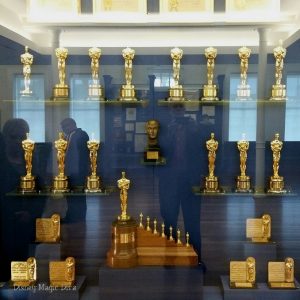 The lobby is packed with well over 200 awards received by Walt, including numerous Academy Awards. From there you begin the walking tour through the Disney family history. The first gallery includes buttons from Walt’s mother’s wedding dress, his father’s fiddle, facsimiles of his many cartoon drawings for his school annual, and a replica of a World War I ambulance like the one Walt drove in France after the war ended.
The lobby is packed with well over 200 awards received by Walt, including numerous Academy Awards. From there you begin the walking tour through the Disney family history. The first gallery includes buttons from Walt’s mother’s wedding dress, his father’s fiddle, facsimiles of his many cartoon drawings for his school annual, and a replica of a World War I ambulance like the one Walt drove in France after the war ended.
The second room you enter is dedicated to the Kansas City years, when Walt began working on animation. Films from the Laugh-O-Gram company play on several flat screens, along with home movies he made showing several special effects Walt had conceived. Audio clips from family members recalling those days with Walt are accessible through telephone-like devices. In the far corner of this room is a well-appointed elevator, clearly marked as your transport to the next gallery, located on the second floor.
When you exit the elevator, you enter the world of southern California in 1923. Of course, this is when Walt arrived in California, and with the aid of his brother Roy set up the Disney Brothers Studios, the first animated cartoon studio to be located in Hollywood. This leads to a gallery detailing how Oswald the Lucky Rabbit was created (and then lost), as well as the birth of Mickey Mouse. 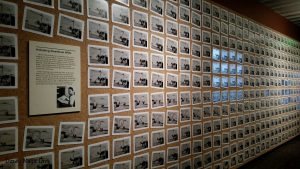 One entire wall is covered in the drawings used to make a few seconds of “Steamboat Willie,” the first Mickey Mouse cartoon released (although it was the third one made – the first two did not have synchronized soundtracks).
One entire wall is covered in the drawings used to make a few seconds of “Steamboat Willie,” the first Mickey Mouse cartoon released (although it was the third one made – the first two did not have synchronized soundtracks).
The galleries continue to lead visitors through the story of the Walt Disney Studio, but also the story of Walt Disney the family man. As you walk through displays dedicated to the important role music played in Disney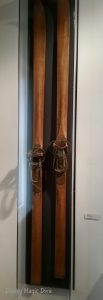 cartoons, the making of Snow White (and the accompanying expansion of the studio), a replica of a Burbank studio animator’s office, the 1941 strike, the struggles of the war years, the post-war recovery and advent of live-action films, the displays never leave the family behind for very long. Walt’s wooden snow skis are on display. Audio clips from Walt’s brothers and sister are abundant, and there is one gallery devoted to Disney family treasures. These include a number of the miniatures from Walt’s own collection, but also photos from his daughters’ weddings, and many photos of Walt and his family at play.
cartoons, the making of Snow White (and the accompanying expansion of the studio), a replica of a Burbank studio animator’s office, the 1941 strike, the struggles of the war years, the post-war recovery and advent of live-action films, the displays never leave the family behind for very long. Walt’s wooden snow skis are on display. Audio clips from Walt’s brothers and sister are abundant, and there is one gallery devoted to Disney family treasures. These include a number of the miniatures from Walt’s own collection, but also photos from his daughters’ weddings, and many photos of Walt and his family at play.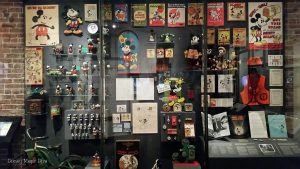
As you move from the family treasures room into a hallway gallery featuring the True-Life Adventure films, the outside wall is made up of floor-to-ceiling windows, affording a magnificent view of the Golden Gate Bridge. A rather beat-up wooden park bench sits at the end of this hallway; it is from Griffith Park, near the carousel where Walt watched his daughters ride while he mused on ways to make such amusement parks more enjoyable for both children and adults. Of course, the result of his musings is well-known: Disneyland.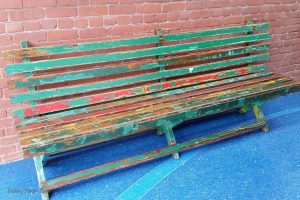
The culmination of Walt’s career is the subject of the next large display room. It is somewhat circular, and a wide spiral ramp winds downward through the gallery. It includes the Carolwood Railroad train which ran in the family’s back yard, numerous artifacts from attractions in Disneyland, and a huge three-dimensional model of the park itself. If you look very closely, as you peer into the park from the main entrance, down Main Street, and through the entrance to Sleeping Beauty’s castle you can see a tiny version of Walt, holding the hand of his daughter, Diane. Walt and Diane can also be found riding in an Autopia car in the Tomorrowland section of the model.
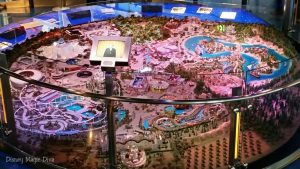 Included in this gallery are 19 television sets showing clips from the Davy Crockett, the Swamp Fox, Zorro, the Mickey Mouse Club, among others. The flows into displays of 1960’s films: Darby O’Gill and the Little People, The Parent Trap, The Absent-Minded Professor, and, of course, Mary Poppins. There is a working audio-animatronic Tiki Bird, which you can control yourself. And when you reach the end, you feel like you have seen it all.
Included in this gallery are 19 television sets showing clips from the Davy Crockett, the Swamp Fox, Zorro, the Mickey Mouse Club, among others. The flows into displays of 1960’s films: Darby O’Gill and the Little People, The Parent Trap, The Absent-Minded Professor, and, of course, Mary Poppins. There is a working audio-animatronic Tiki Bird, which you can control yourself. And when you reach the end, you feel like you have seen it all.
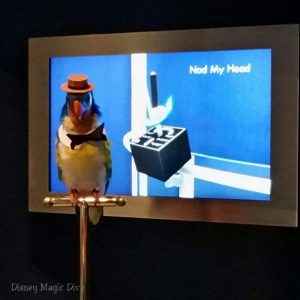 But there is one more gallery. When Walt Disney passed away in 1966, the entire world mourned. Condolences poured in from celebrities, world leaders, and ordinary fans like you and me, and these are displayed here. Editorial cartoons from dozens of newspapers are included. It took me a long time to leave this space, which empties into a corridor with large view-screens on both sides. The screens show a series of Disney-related quotes against a background of Disney imagery, a wonderful place to sit for a moment and reflect.
But there is one more gallery. When Walt Disney passed away in 1966, the entire world mourned. Condolences poured in from celebrities, world leaders, and ordinary fans like you and me, and these are displayed here. Editorial cartoons from dozens of newspapers are included. It took me a long time to leave this space, which empties into a corridor with large view-screens on both sides. The screens show a series of Disney-related quotes against a background of Disney imagery, a wonderful place to sit for a moment and reflect.
And then it’s over. The tour, that is, but not the visit. The exit from the tour opens to a small café with sandwiches, snacks, and beverages, as well as good-sized gift shop. Just like any proper Disney attraction should.
Interested in visiting the Walt Disney Family Museum? Located at 104 Montgomery Street in the Presidio of San Francisco, it is open from 10 AM to 6 PM except on Tuesdays, Thanksgiving, Christmas, and New Year’s Day. Admission is $20 for adults, $15 for students or seniors, $12 for youths aged 6 to 17, and free for ages 5 and under. Year-long memberships are also available that include free admission, among other perks.
TIP: I was able to obtain my ticket by redeeming points at Disney Moviewatcher Rewards. If you are a member, be sure to check if Disney Family Museum tickets are being offered as a reward. If you are a D23 member, you may also qualify for a discount. Be sure to ask!
***Disclaimer – We at Tips from the Disney Divas and Devos hope you enjoy reading our articles, and encourage you to share any you feel may be of interest to someone else. We do ask, however, if you choose to share the photographs attached to our articles, you give credit to the photographer. Thank you for your cooperation and sharing our love of Disney!

